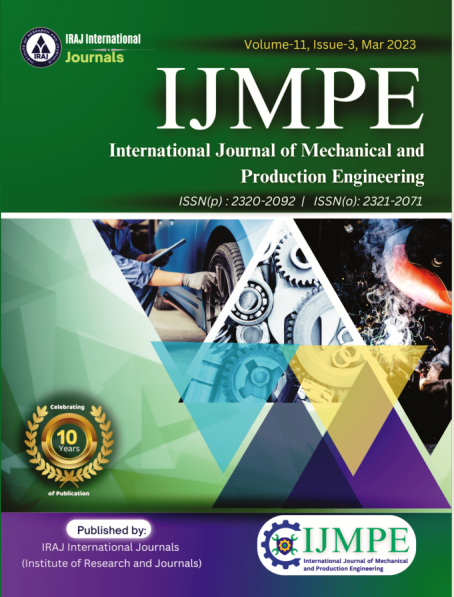Publish In |
International Journal of Mechanical and Production Engineering (IJMPE)-IJMPE |
 Journal Home Volume Issue |
||||||||
Issue |
Volume-6,Issue-6 ( Jun, 2018 ) | |||||||||
Paper Title |
Investigating the Potential of Hybrid Hot Forging Processes with Regard to the Forming and Joining of Sheets and Massive Elements | |||||||||
Author Name |
Sara Mohammadifard, Malte Stonis, Jan Langner, Bernd-Arno Behrens | |||||||||
Affilition |
Prof. Dr. Dr. Institut für Integrierte Produktion Hannover gemeinnützige GmbH (IPH) Hollerithallee 6, 30419 Hannover, Germany | |||||||||
Pages |
32-37 | |||||||||
Abstract |
Every year about two billion components are manufactured by forging. Because of the high temperatures and high forming forces required, many components are produced in a segmental manner and later joined together, e.g. by welding. In order to save manufacturing steps – and thus costs and time – a production process is to be developed in which elements of different steels are simultaneously deformed and joined in a single forging. These elements could have very different geometries and thus strongly influence the manufacturability of complex parts. This combination of deformation and joining is called a hybrid process. In this paper, an investigation on the simultaneous forging and joining of massive bulk and sheet elements is described. The aim is to characterize a first influence of the different forming temperatures on the resulting joint zone of the hybrid process. For this purpose, a series of tests are carried out using a screw press. To find out if there is a correlation between the temperature and the quality of hybrid forgings, the samples are analyzed by means of tensile tests and metallographic analysis. These analyses show the influence of the forming temperature on the joint zone. Based on the knowledge gained, the joint zone can be characterized and evaluated. The main finding is that at higher forming temperatures, the areas of material bonding are significantly stronger than at low temperatures. The findings obtained contribute to the development of joining by hybrid forging. The results can be used to further investigate the relevant manufacturing processes and component properties of hybrid parts. Keywords- Forging, forming, hybrid process, massive element, sheet element, tensile test, metallography | |||||||||
| View Paper | ||||||||||